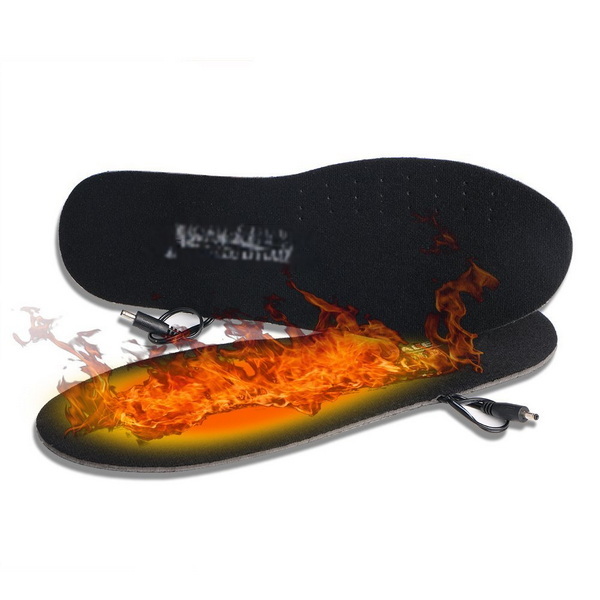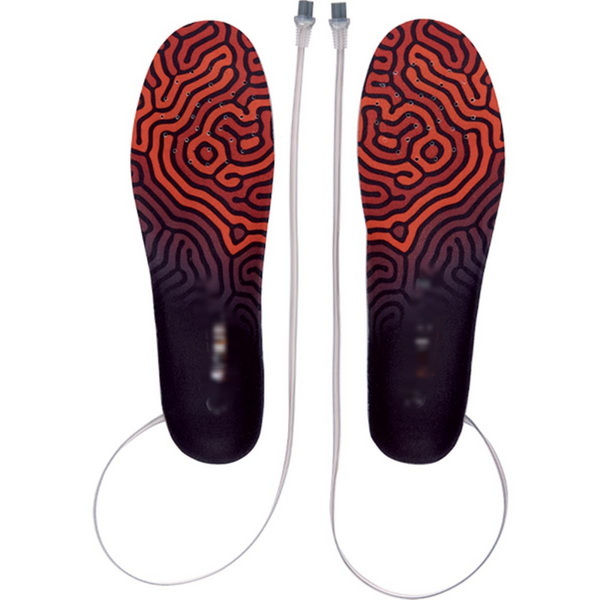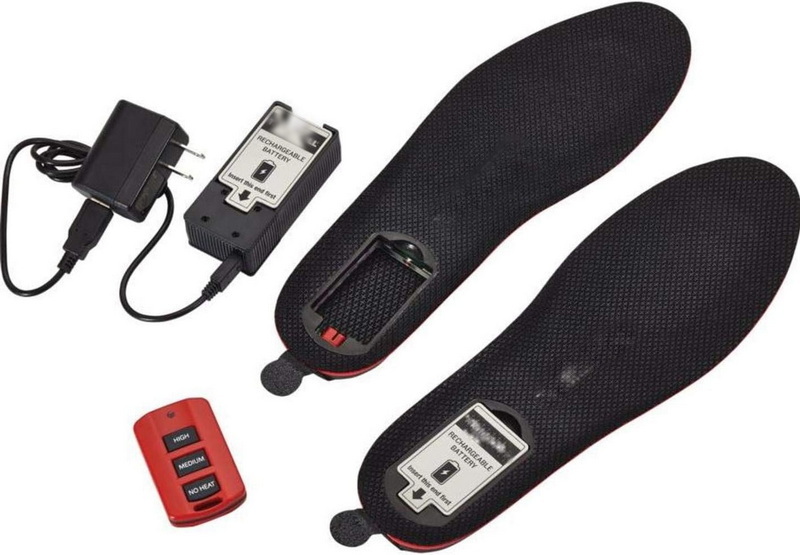Views: 222 Author: Edvo Publish Time: 2025-10-12 Origin: Site











Content Menu
● Why Foot Warmth Matters in Hunting
● Benefits of Heated Insoles for Hunting
>> 1. Consistent Warmth in Extreme Cold
>> 2. Lightweight and Low Profile
>> 3. Customizable Heat Levels
>> 5. Enhanced Safety and Performance
>> 6. Versatility Beyond Hunting
● Choosing the Right Heated Insoles for Hunting
>> Important Factors to Consider
● How to Use Heated Insoles for Hunting
● Comparison With Other Foot Warming Methods
● Practical Hunting Tips with Heated Insoles
● FAQs About Heated Insoles for Hunting
>> 1. Are heated insoles safe to use in hunting boots?
>> 2. How long do heated insoles last on a single charge?
>> 3. Can I use heated insoles with any type of hunting boots?
>> 4. Are heated insoles better than heated socks?
>> 5. How should I care for and maintain heated insoles?
Hunting in cold weather often means facing freezing temperatures, snow, and icy terrain. For any hunter, keeping feet warm and comfortable is essential for maintaining focus, agility, and endurance during long hours outdoors. Heated insoles have become an increasingly popular solution to these challenges, offering warmth right where it's needed most. But are heated insoles truly good for hunting? This comprehensive guide explores the benefits, technology, selection tips, and practical aspects of using heated insoles for hunting activities.

Cold feet can shorten a hunt by making you uncomfortable, reducing your performance, and even risking frostbite in extreme conditions. Hunters often face long periods of standing or slow movement in frigid weather, which slows blood circulation to extremities. Maintaining foot warmth:
- Enhances comfort, enabling longer time spent in the field
- Preserves dexterity and responsiveness needed for shooting and movement
- Prevents cold-related injuries like frostbite and numbness
- Reduces fatigue caused by shivering or cold stress
Heated insoles offer an efficient and targeted way to retain foot warmth compared to layers of socks alone.
Heated insoles are battery-powered devices containing carbon fiber or similar heating elements that generate warmth consistently across the bottom of your feet. Key features include:
- Rechargeable Lithium-ion Batteries: Provide hours of continuous heat (typically 6-8 hours)
- Adjustable Heat Settings: Allow hunters to control temperature according to conditions
- Lightweight and Flexible Design: Ensures comfort inside hunting boots without restricting movement
- Remote Control or On-Insole Controls: For easy temperature adjustment on the go
- Water-Resistant and Durable Materials: Suitable for wet outdoor environments
The heating elements inside the insoles work by slowly radiating warmth, which helps improve blood flow and prevents the cold sensation caused by stagnant circulation. This technology is often paired with temperature sensors to avoid overheating and to optimize battery consumption.
Using heated insoles during hunting trips offers several distinct advantages:
Heated insoles provide reliable warmth even in sub-zero temperatures, essential for late-season hunting. Unlike traditional thick socks, they supply heat directly to the soles, improving blood circulation and comfort.
Unlike bulky insulated boots or external warmers, heated insoles fit inside your existing hunting boots without adding excess bulk or reducing boot fit, which helps maintain flexibility and stealth during tracking.
With multiple heat settings, hunters can adjust warmth dynamically based on weather changes or physical activity, conserving battery life while maximizing comfort.
Modern rechargeable insoles offer long-lasting heat with some models providing up to 8+ hours per charge, covering a full day of hunting.
Warm feet reduce the risk of frostbite, maintain hunter focus, and improve overall stealth and movement capability when tracking game animals.
While primarily valued by hunters, heated insoles are also useful for other outdoor activities such as fishing, hiking, and working in cold environments, making them a multi-purpose investment.
When selecting heated insoles for hunting, consider these key aspects:
- Battery Life: Look for longer-lasting batteries suitable for multi-hour hunts.
- Heat Settings: A range of settings allows for better temperature control.
- Water Resistance: Waterproof or water-resistant insoles protect against snow and moisture.
- Size and Fit: Insoles that can be trimmed or customized to fit your boots perfectly.
- Noise Levels: Ultra-quiet heating elements preserve hunting stealth.
- Durability: Rugged construction for outdoor wear and tear.
Additionally, consider whether the insoles offer:
- Safety Features: Automatic shut-off or temperature limiters to prevent overheating.
- Ease of Charging: Magnetic charging pads or USB ports for convenience.
- Compatibility: Ensure the insoles work well with your existing gear and batteries.

- Insert heated insoles inside clean-dry boots, ensuring they lie flat.
- Connect batteries and test the heat levels before setting out.
- Use socks thin enough to allow heat transmission but sufficient for insulation.
- If the insoles have remote controls, familiarize yourself with operation to adjust temperatures quietly in the field.
- Fully charge batteries before each hunt.
- Use heat settings in pulses (turning on and off intermittently) to conserve power.
- Carry spare charged batteries if planning extended excursions.
- Keep batteries warm in your pocket to extend battery life during freezing temperatures.
- Remove batteries when not in use to prevent damage.
- Clean insoles with a damp cloth; avoid full immersion in water.
- Store them in a dry place away from direct sunlight.
| Method | Pros | Cons |
|---|---|---|
| Heated Insoles | Direct heat, customizable, low bulk | Requires charging, initial cost |
| Heated Socks | Flexible, wearable with most shoes | Can be bulky, may restrict circulation |
| Insulated Boots | Built-in warmth, durable | Bulky, less flexible, expensive |
| Chemical Warmers | Disposable, easy to use | Temporary heat, less eco-friendly |
| Boot Warmers | Strong insulation | Can hinder mobility, noisy |
Heated insoles offer a balanced mix of convenience, warmth, and mobility, making them a top choice for serious hunters.
- Match your insoles with appropriate footwear.
- Layer with moisture-wicking socks to keep feet dry.
- Monitor your foot temperature and adjust heat settings accordingly.
- Keep spare batteries warm in your pocket for better performance.
- Combine heated insoles with other warming accessories like gloves and insulated jackets for full-body protection.
- Use gaiters and waterproof boots in deep snow combined with heated insoles for maximum warmth and protection.
- Test your insoles during practice hikes to identify the ideal heat setting before the actual hunt.
- Be mindful of battery weight and distribution to maintain balance and comfort during long treks.
Heated insoles are excellent gear for hunters facing cold weather conditions. They provide targeted, adjustable warmth, enhance comfort, and improve safety without sacrificing mobility or stealth. Whether you're an experienced late-season hunter or just preparing for your first cold-weather hunt, investing in quality heated insoles can significantly elevate your outdoor experience and hunting success. With proper selection, usage, and care, heated insoles can keep your feet warm and comfortable, allowing you to focus more on the hunt and less on the cold.

Yes, most heated insoles are designed with safety certifications and built-in protections against overheating. Ensure to choose reputable brands and follow the manufacturer's instructions for safe use.
Most heated insoles provide 6 to 8 hours of heat, enough for a full day of hunting. Battery life may vary based on heat settings and temperature conditions.
Heated insoles are generally compatible with most hunting boots, especially if trims or custom sizes are available. Make sure the insole fits comfortably without making the boots too tight.
Both have pros and cons, but heated insoles provide direct warmth to the feet's soles and usually fit discreetly inside boots without adding bulk, making them ideal for hunters who need mobility and stealth.
Remove batteries before cleaning, avoid submerging insoles, and follow manufacturer guidelines. Store batteries in a cool, dry place and keep insoles dry when not in use.